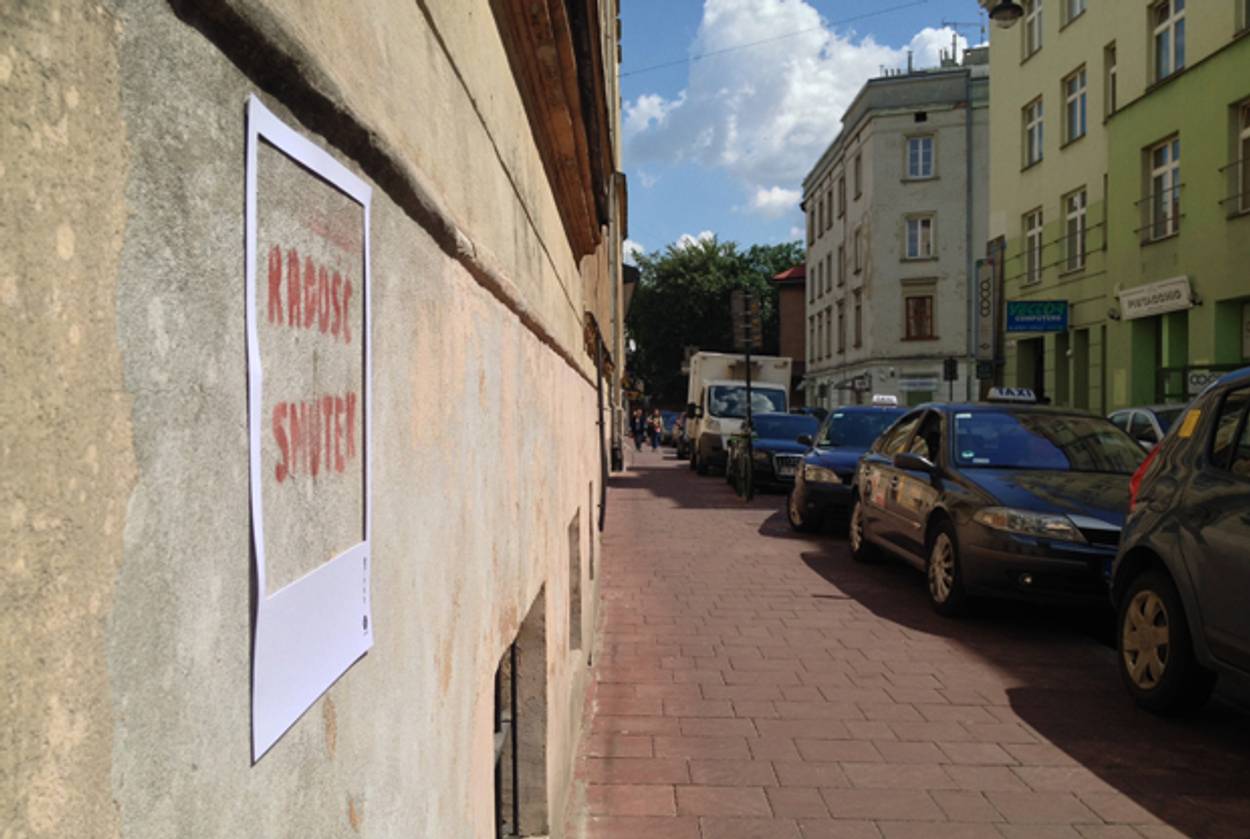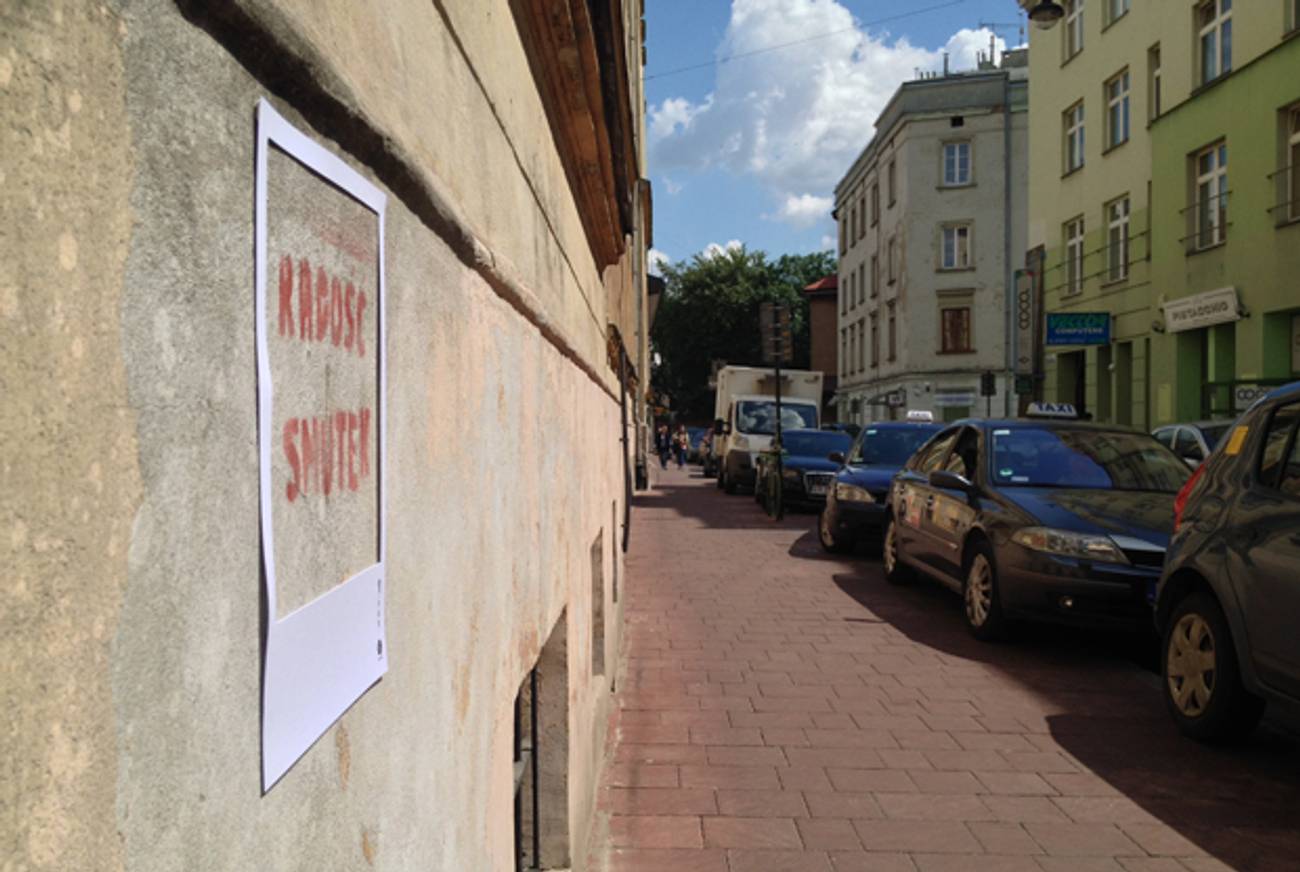Project Offers Fresh Glimpse Into Jewish Krakow
‘Snapshot’ highlights traces of the city’s past using Polaroid-style frames




On a Thursday morning earlier this month, a group of 12 people gathered in front of Krakow’s Jewish Community Centre, ready to explore the city’s Jewish quarter, Kazimierz, with a fresh gaze. We were led by Helena Czernek and Aleksander Prugar, the creative minds behind “Snapshot—Urban Project,” which debuted at this year’s 24th annual Jewish Culture Festival in Krakow. Different sized cardboard Polaroid-style frames were distributed, and smaller groups were tasked with ‘framing’ details of the neighborhood that may be overlooked, interesting, or symbolic.
“The goal is to make Kazimierz a gallery for everyone,” said Czernek. “After today it’ll still be there for people who didn’t take part.”
I followed Czernek and Prugar, founders of designer Judaica brand Mi Polin, admiring their eye for detail and flexible creativity: upside-down, sideways, and multiple frames were encouraged. Though the couple lives in Warsaw, our smaller group of five had all lived in or at least toured the neighborhood before. Yet everyone still seemed to point out details that delighted the group: A matzevah (tombstone) fragment built into a wall, pre-war Yiddish signage, and funky modern graffiti. Professor Karen Underhill, who has worked in Poland for many years, explained the meaning of a mezuzah to a curious passerby before framing it.
Just before 11:30 a.m., the group began strolling back to reconvene. On the way, we passed a framed flower growing from a wall and framed graffiti of a circus monkey across from the nightclub Mezcal, located inside a former prayer-house.
“This is a nice part,” Czernek said, “when we see what people chose to frame.” The larger group gathered again, this time with stories and questions. One participant passed around her camera; another said she liked that everyone could now talk about the activity.
“Although you can come here every year for many years, you can miss a lot of details,” said Monika Krajewski, who has been documenting Poland’s Jewish heritage since the 1970s. “But I had a feeling that I didn’t want to frame everything because some things speak for themselves.”
This led to the question of what each group chose to frame and why. Opinions varied about framing graffiti of a Jewish star with the Polish word hańba (disgrace/shame) below it. Some felt that it brought attention to a problem that needs to be discussed; others felt it was glorifying negative messages. Afterwards, one Polish friend suggested the word could have been intended pejoratively, as a sign of empathy towards Jews. This is an especially complicated issue in Poland, where what appears to be anti-Semitic graffiti can instead be symbolism used by football hooligans to mark their turf.
Snapshot was one of many events during the Jewish Culture Festival, which this year had a “Kibbutz” theme, that encouraged engagement with contemporary ideas as well as local culture. Members of the JCC’s student club Gimel led discussions on sensitive topics like ‘Kosher Sex’ and ‘Can I Be a Good Jew if I’m Gay?’ while other lectures tackled topics like ‘Jewish Poland: The Next 25 Years’ and ‘Solidarity According to Women’.
Throughout the Snapshot activity, many people stopped to ask what we were doing. Others paused to simply take a closer look at what was inside the frames. The project accomplished its goal on many levels, offering participants a new way of looking at the neighborhood’s symbols of history, sparking constructive dialogue, and leaving a paper trail worth pondering.
Dara Bramson is a museum educator and freelance writer based in Krakow. She earned a professional certificate in peace studies & conflict resolution as a Rotary Peace Fellow in Thailand in 2014.
Dara Bramson is a journalist covering Eastern Europe and Southeast Asia.